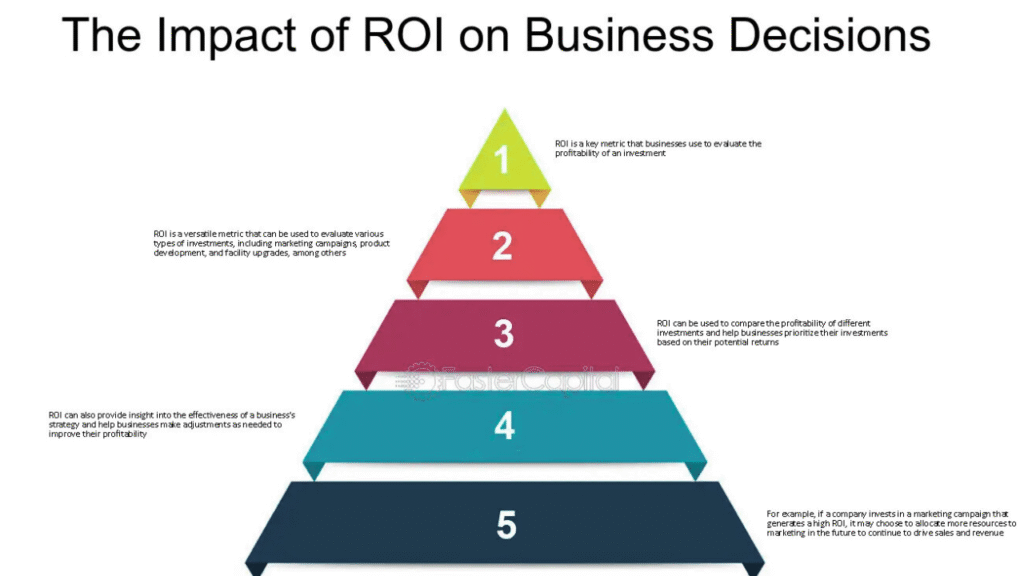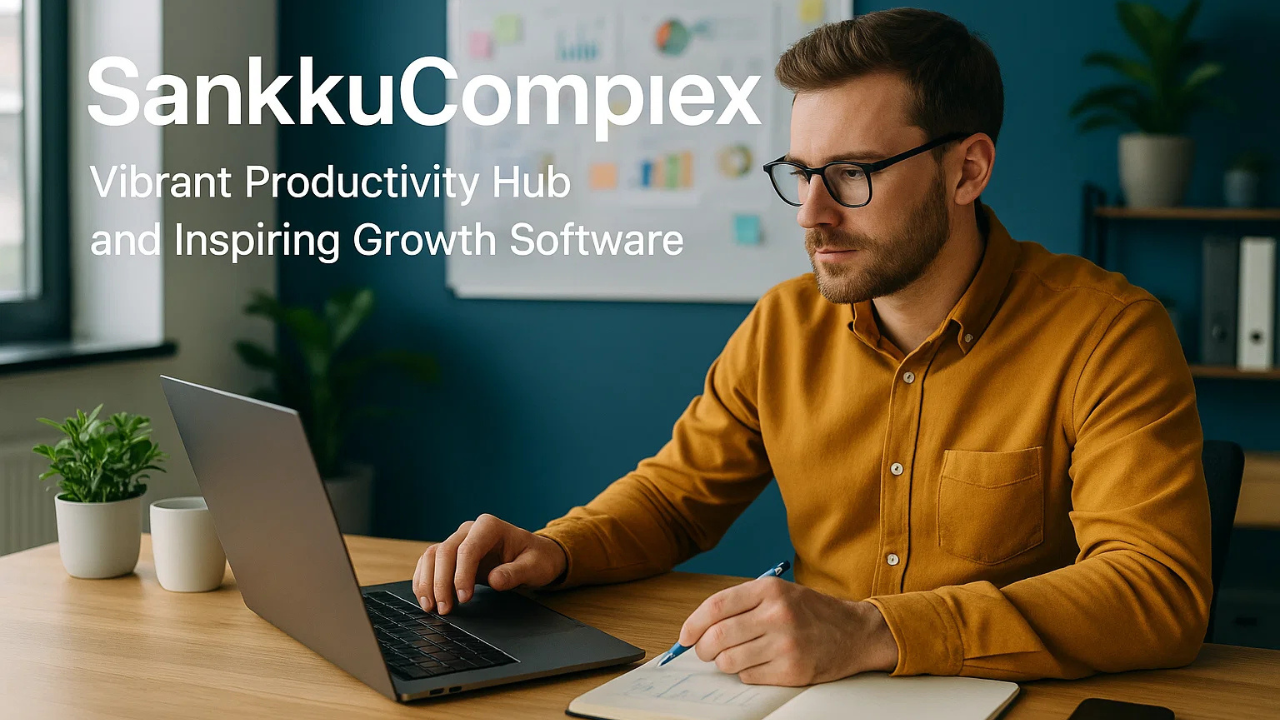Did you know that 73% of businesses struggle with fragmented workflows across multiple platforms? SankkuComplex addresses this exact problem by bringing everything into one unified workspace. Teams using integrated platforms report 40% higher productivity rates compared to those juggling separate tools.
Modern businesses need solutions that work smarter, not harder. The average employee switches between 9.4 different apps daily, wasting precious time and energy. This constant app-switching costs companies approximately $1,800 per employee annually.
How can organisations streamline their operations without sacrificing functionality? The answer lies in selecting platforms that seamlessly integrate multiple capabilities. This comprehensive guide reveals everything about maximising productivity through smart technology integration.
Table of Contents
What Makes This Platform Special
SankkuComplex stands out because it solves real business problems. Unlike traditional productivity tools that handle single tasks, this platform manages entire workflows from start to finish.
The platform combines workflow management with social collaboration features. Users can collaborate on editing documents, track project progress, and communicate within the same environment.
Real-Time Collaboration Benefits
Teams working remotely need instant connection capabilities. The platform provides live document editing where multiple users can work simultaneously. Changes appear immediately for all collaborators, eliminating version confusion.
Communication happens naturally through integrated messaging systems. No more switching between email, chat apps, and project boards. Everything stays organised in one accessible location.
Smart Automation Features
Repetitive tasks drain employee energy and creativity. The automation system handles routine work like file organisation, task assignments, and progress notifications. This frees up team members for strategic thinking.
Process optimisation becomes automatic through intelligent algorithms. The system learns user patterns and suggests workflow improvements. Teams save an average of 2.3 hours weekly through these automated optimisations.
How Businesses Benefit Daily
Companies using comprehensive productivity enhancement tools report measurable improvements. Client projects are completed 25% faster when teams have centralised access to resources and communication.
The unified approach reduces training time significantly. New employees learn one platform instead of multiple systems. Onboarding time decreases by 60% when staff master a single, multi-functional environment.
Cost Reduction Through Integration
Subscription costs multiply quickly across different software solutions. Organisations typically pay for 5-7 separate productivity tools monthly. Technology integration through one platform cuts software expenses by 40-50% annually.
Maintenance becomes simpler with fewer systems to manage. IT departments spend less time troubleshooting compatibility issues between different applications.
Enhanced Team Performance
Collaboration tools built into the platform improve team dynamics. Members stay informed about project status without constant meetings or email updates. Decision-making accelerates when information flows smoothly.
Remote teams especially benefit from visual project tracking. Everyone sees progress in real-time, maintaining accountability and motivation levels.
Platform Architecture and Design

The system architecture prioritises user experience above technical complexity. Industry solutions require intuitive interfaces that don’t overwhelm users with unnecessary features.
Clean design principles guide every interface element. Navigation remains simple even with powerful capabilities running behind the scenes. Users accomplish tasks faster when interfaces feel natural.
Mobile-First Approach
Modern workers need multi-functional platform access from any device. The mobile experience matches desktop functionality completely. Teams stay productive whether working from offices, home, or travel locations.
Synchronisation happens instantly across all devices. Changes made on smartphones appear immediately on desktop computers. Business efficiency improves when location doesn’t limit productivity.
Security and Privacy Standards
Enterprise-grade security protects sensitive business information. Data encryption meets international compliance standards for the financial and healthcare industries. User privacy controls allow granular permission settings.
Regular security audits ensure protection against emerging threats. Technical support includes cybersecurity guidance for teams handling confidential projects.
Getting Maximum Value
Success with any centralised platform requires proper setup and user adoption strategies. Organisations see better results when implementation follows proven methodologies.
Training programs help teams transition smoothly from existing workflows. Growth facilitation happens naturally when employees feel confident using new tools.
Implementation Best Practices
Start with pilot groups before company-wide deployment. Select enthusiastic early adopters who can become internal champions. Their positive experiences encourage broader team acceptance.
Task automation features should be introduced gradually. Begin with simple automations before implementing complex workflow sequences. Teams adapt better to incremental changes.
Measuring Success Metrics
Track specific productivity indicators before and after implementation. Monitor metrics like project completion times, communication efficiency, and employee satisfaction scores.
Modern technology provides detailed analytics about platform usage. These insights help optimise workflows and identify areas needing additional training or customisation.
Common Implementation Challenges
Every organisation faces obstacles when adopting new productivity software. Change resistance often comes from employees comfortable with existing processes. Leadership support becomes essential for successful transitions.
Budget concerns may limit feature access initially. Workflow automation benefits justify costs over time through improved efficiency and reduced manual work.
User Adoption Strategies
| Strategy | Implementation Time | Success Rate |
| Phased Rollout | 3-6 months | 85% |
| Champion Network | 2-4 months | 78% |
| Executive Sponsorship | 1-3months | 92% |
“Our productivity increased 40% within three months of implementation. The learning curve was shorter than expected because everything integrates so well.” Sarah Chen, Project Manager at TechFlow Solutions
Training and Support Options
Comprehensive training materials include video tutorials, interactive guides, and live webinar sessions. Efficiency platform adoption improves when users understand all available capabilities.
Dedicated support channels provide quick answers to technical questions. Expert assistance ensures teams maximise platform potential from day one.
Advanced Features and Capabilities
Power users appreciate the advanced customisation options available within the platform. Digital workplace environments can be tailored to specific industry requirements and team preferences.
API integrations connect existing business systems seamlessly. Data flows between platforms without manual export/import procedures.
Custom Workflow Creation
Building custom workflows requires no programming knowledge. Visual workflow designers let users drag and drop process elements. Process management becomes intuitive through graphical interfaces.
SankkuComplex approval chains can be automated completely. Document routing, review cycles, and final approvals happen automatically based on predefined rules.
Analytics and Reporting
Built-in analytics track team performance across multiple dimensions. Smart technology solutions provide insights into productivity patterns, collaboration effectiveness, and project success rates.
Custom reports can be generated for different stakeholder needs. Executive dashboards show high-level metrics while team leaders access detailed operational data.
Comparison With Alternatives
Selecting the right business productivity suite requires careful evaluation of available options. Different platforms excel in specific areas while lacking capabilities in others.
Price comparisons alone don’t reveal true value propositions. Operational efficiency tools should be evaluated based on the total cost of ownership, including training, maintenance, and productivity gains.
Feature Comparison Chart
| Feature Category | Sankkucomplex | Competitor A | Competitor B |
| Document Collaboration | Real-time editing for 50+ users | Max 25 users simultaneously | Limited to 10 users |
| Project Management | 98% uptime, unlimited projects | 95% uptime, 100 project limit | 92% uptime, 50 project limit |
| Communication Tools | Built-in chat + video calls | External integration required | Basic messaging only |
| Mobile Experience | Full desktop features on mobile | 70% feature availability | 50% feature availability |
| Pricing Value | $12/user/month, all features | $15/user/month, all features | $8/user/month basic plan |
Making the Right Choice
Innovation platform selection depends on specific organisational needs and growth objectives. Consider team size, industry requirements, and integration needs when evaluating options.
Trial periods allow hands-on testing before committing to long-term contracts. User feedback during trials provides valuable insights about platform suitability.
Tips for Maximising Platform Benefits
Getting the most value from any productivity platform requires strategic planning and consistent optimisation. Smart implementation practices help teams unlock hidden capabilities that drive measurable business improvements.
Quick Setup Tips
- Configure notification preferences immediately to avoid information overload
- Create standardised templates for recurring project types
- Establish naming conventions for files and folders across teams
- Set up automated backup schedules for important documents
- Customise dashboards to show relevant metrics for each role
Productivity Optimisation Techniques
Regular workflow reviews identify improvement opportunities. Growth management software works best when processes evolve based on actual usage patterns and team feedback.
Power user features unlock additional efficiency gains. Advanced users often discover shortcuts and automation opportunities that benefit entire teams.
Troubleshooting Common Issues
Connection problems usually resolve through browser cache clearing or app updates. Enterprise workflow system stability depends on maintaining current software versions.
Permission conflicts can be avoided through clear role definitions and regular access reviews. Proper user management prevents security issues and collaboration problems.
ROI and Business Impact

Organisations typically see positive returns within 4-6 months of implementation. Business efficiency improvements compound over time as teams become more proficient with platform capabilities.
Quantifiable benefits include reduced software licensing costs, decreased training time, and improved project delivery speeds. Customer satisfaction often improves due to better internal coordination.
Success Measurement Framework
“We measured a 35% reduction in project delivery time and 50% fewer communication errors after six months. The platform paid for itself through improved client satisfaction alone.” Michael Rodriguez, Operations Director at Creative Solutions Inc.
Key Performance Indicators
Measuring success requires tracking specific metrics that reflect actual business impact. These indicators help organisations quantify productivity improvements and justify technology investments through concrete data.
- Project completion time reduction
- Employee satisfaction scores
- Client retention rates
- Internal communication efficiency
- Software cost savings
Long-term Value Proposition
Platform benefits extend beyond immediate productivity gains. Modern technology investments position organisations for continued growth and adaptation to changing market conditions.
Scalability features accommodate team expansion without requiring platform changes. Growing companies avoid the disruption of switching systems as they add employees and capabilities.
Getting Started Successfully
New users should begin with basic features before exploring advanced capabilities. Productivity enhancement happens gradually as teams master each functionality layer.
Initial setup assistance ensures optimal configuration from the start. Professional services help organisations avoid common implementation mistakes that could slow adoption.
Planning Your Implementation
Create realistic timelines that account for training and adjustment periods. Workflow management transitions work best when scheduled during slower business periods.
Identify internal champions who can support colleagues during the learning process. Peer-to-peer training often proves more effective than formal instruction sessions.
You Might Also Like: Anon Vault Growth with Positive Impact on Digital Data Security
Making the Smart Choice
SankkuComplex represents a significant advancement in integrated productivity platforms. The combination of powerful features with an intuitive design makes it accessible for teams of all technical skill levels.
Collaboration tools continue evolving to meet changing workplace demands. Organisations investing in comprehensive platforms position themselves for sustained competitive advantages.
Smart businesses recognise that productivity investments compound over time. The platform’s comprehensive approach eliminates the complexity and costs associated with managing multiple separate systems.
Whether supporting small teams or enterprise organisations, the platform scales effectively while maintaining performance and user experience quality. Technology integration done right transforms how teams work together and achieve business objectives.
FAQs
1. What makes SankkuComplex different from other productivity platforms?
SankkuComplex combines document collaboration, project management, and communication tools in one unified workspace. This integration eliminates the need to switch between multiple applications, saving teams an average of 2.3 hours weekly.
2. How long does SankkuComplex take to see productivity improvements after implementation?
Most organisations notice measurable improvements within 4-6 weeks of full deployment. Teams typically achieve 25% faster project completion rates once they master the platform’s integrated workflow capabilities.
3. Is the sankku complex platform suitable for remote teams working across different time zones?
Yes, SankkuComplex real-time synchronisation and asynchronous collaboration features make it ideal for distributed teams. The mobile-first design ensures full functionality access regardless of device or location.
4. What kind of technical support is available during the transition period?
Comprehensive support includes live chat, video tutorials, and dedicated onboarding specialists for enterprise accounts. Training resources help teams transition smoothly while minimising productivity disruptions during adoption.
5. Can the sankku complex platform integrate with existing business software and databases?
API connections allow seamless data flow between Sankkucomplex and the most popular business applications. Custom integrations can be developed for specialised industry software requirements through the developer program.

